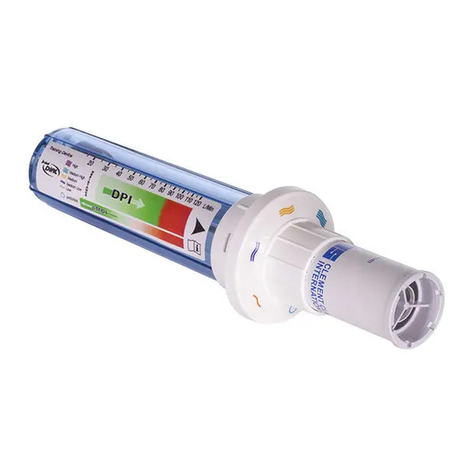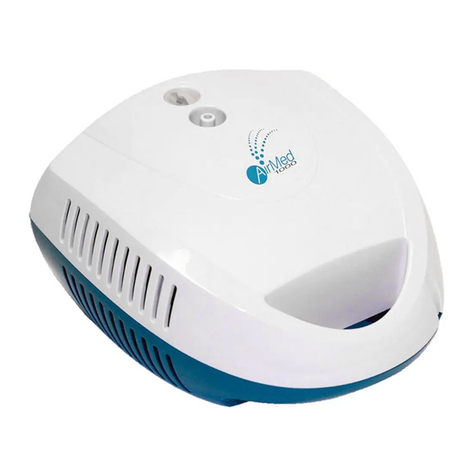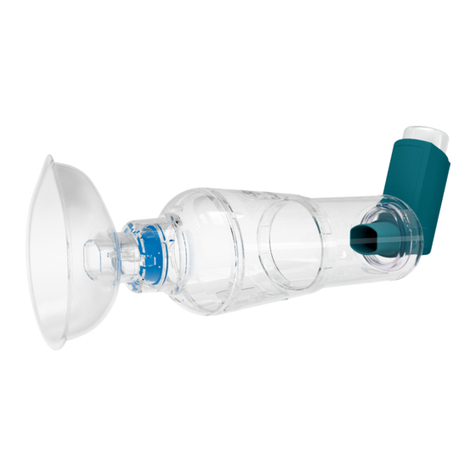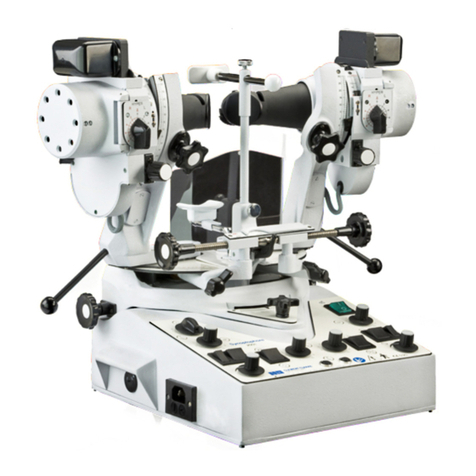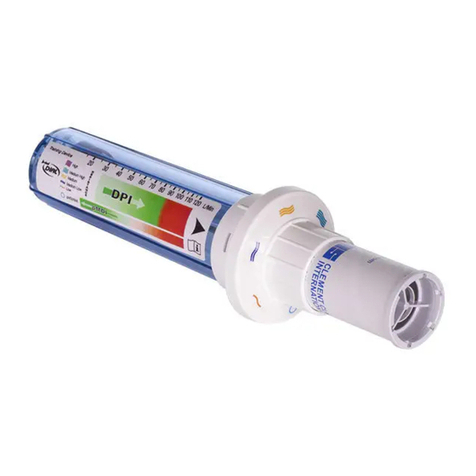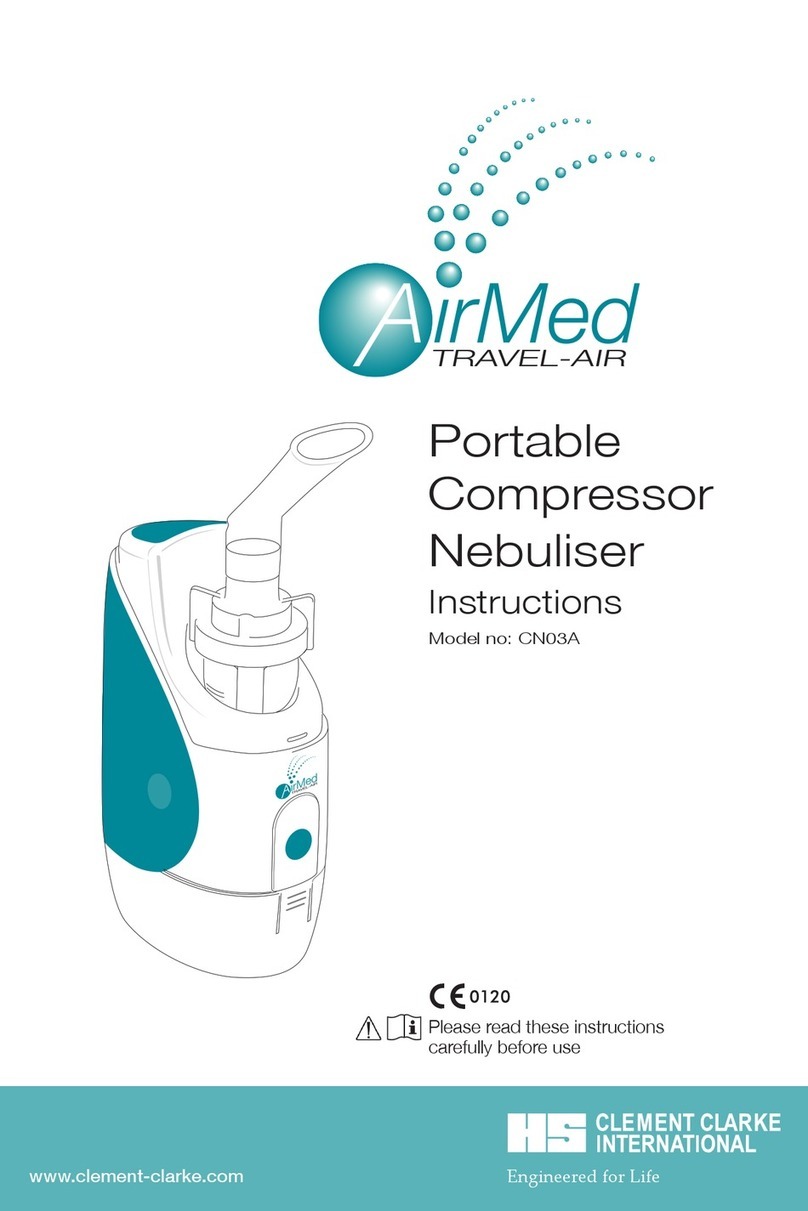
Contents
1. Introduction . . . . . . . . . . . . . . . . . . . . . . . . . . . . . . . . . . . . . . . . . . 2
1.1 Technical Description . . . . . . . . . . . . . . . . . . . . . . . . . . . . . . . . . . . . . . . 2
1.2 Purpose of Use . . . . . . . . . . . . . . . . . . . . . . . . . . . . . . . . . . . . . . . . . . . 3
1.3 Brief Description of the Appliance . . . . . . . . . . . . . . . . . . . . . . . . . . . . . . 3
2. General Layout . . . . . . . . . . . . . . . . . . . . . . . . . . . . . . . . . . . . . . . 4/5
3. Safety and Regulatory Information . . . . . . . . . . . . . . . . . . . . . . . . 6
3.1 Safety Notices . . . . . . . . . . . . . . . . . . . . . . . . . . . . . . . . . . . . . . . . . . . . 6
3.2 Measuring Prism Replacement . . . . . . . . . . . . . . . . . . . . . . . . . . . . . . . . 7
3.3 Transportation and Storage . . . . . . . . . . . . . . . . . . . . . . . . . . . . . . . . . . .8
3.4 Notes on Usage . . . . . . . . . . . . . . . . . . . . . . . . . . . . . . . . . . . . . . . . . . . 8
3.5 Statutory Requirements . . . . . . . . . . . . . . . . . . . . . . . . . . . . . . . . . . . . . 9
3.6 Caution . . . . . . . . . . . . . . . . . . . . . . . . . . . . . . . . . . . . . . . . . . . . . . . . . 9
3.7 Regulatory Information: CE Mark . . . . . . . . . . . . . . . . . . . . . . . . . . . . . . .9
3.8 Environmental Conditions of Use . . . . . . . . . . . . . . . . . . . . . . . . . . . . . . .10
3.9 EMC (Electromagnetic Compatibility) Declaration . . . . . . . . . . . . . . . . . . 11
3.10 Product Labelling and Safety Symbols . . . . . . . . . . . . . . . . . . . . . . . . . .12
3.11 Safety Symbols . . . . . . . . . . . . . . . . . . . . . . . . . . . . . . . . . . . . . . . . . . 12
4. Taking a Pressure Measurement . . . . . . . . . . . . . . . . . . . . . . . . . .13/14
5. To Prepare the Prism for Use . . . . . . . . . . . . . . . . . . . . . . . . . . . . 15
5.1 Remove Perkins Mk2 Tonometer From Case . . . . . . . . . . . . . . . . . . . . . . 15
5.2 Doubling Prism . . . . . . . . . . . . . . . . . . . . . . . . . . . . . . . . . . . . . . . . . . . 15
5.3 To Insert Prism into Prism Holder . . . . . . . . . . . . . . . . . . . . . . . . . . . . . . 15
5.4 Tonosafe Disposable Prism . . . . . . . . . . . . . . . . . . . . . . . . . . . . . . . . . . . 15
5.5 Batteries . . . . . . . . . . . . . . . . . . . . . . . . . . . . . . . . . . . . . . . . . . . . . . . . 15/16
6. Operating the Equipment . . . . . . . . . . . . . . . . . . . . . . . . . . . . . . . 17
6.1 Preparing the Patient . . . . . . . . . . . . . . . . . . . . . . . . . . . . . . . . . . . . . . . 17
6.2 Instruction to the Patient . . . . . . . . . . . . . . . . . . . . . . . . . . . . . . . . . . . . . 18
7. Cleaning the Equipment . . . . . . . . . . . . . . . . . . . . . . . . . . . . . . . . .19
8. General Notes . . . . . . . . . . . . . . . . . . . . . . . . . . . . . . . . . . . . . . . . .20
8.1 Astigmatism . . . . . . . . . . . . . . . . . . . . . . . . . . . . . . . . . . . . . . . . . . . . . . 20/21
8.2 To Use the Instrument on Animals . . . . . . . . . . . . . . . . . . . . . . . . . . . . . . 21
8.3 Special Precautions . . . . . . . . . . . . . . . . . . . . . . . . . . . . . . . . . . . . . . . . 21
9. Measurement . . . . . . . . . . . . . . . . . . . . . . . . . . . . . . . . . . . . . . . . . 22/23
9.1 Sources of Error . . . . . . . . . . . . . . . . . . . . . . . . . . . . . . . . . . . . . . . . . . 24
9.2 Inaccurate Horizontal Centering . . . . . . . . . . . . . . . . . . . . . . . . . . . . . . . 25
9.3 Inaccurate Vertical Centering . . . . . . . . . . . . . . . . . . . . . . . . . . . . . . . . . 26
9.4 Inaccurate Pressure . . . . . . . . . . . . . . . . . . . . . . . . . . . . . . . . . . . . . . . . 27
10. Case Contents . . . . . . . . . . . . . . . . . . . . . . . . . . . . . . . . . . . . . . . 28
11. Calibration Check . . . . . . . . . . . . . . . . . . . . . . . . . . . . . . . . . . . . . 29
12. Storage of Prism and Tonometer . . . . . . . . . . . . . . . . . . . . . . . . . 30
13. Technical Specifications . . . . . . . . . . . . . . . . . . . . . . . . . . . . . . . 31
References . . . . . . . . . . . . . . . . . . . . . . . . . . . . . . . . . . . . . . . . . . . . . 32
Accessories . . . . . . . . . . . . . . . . . . . . . . . . . . . . . . . . . . . . . . . . . . . . 33
en
